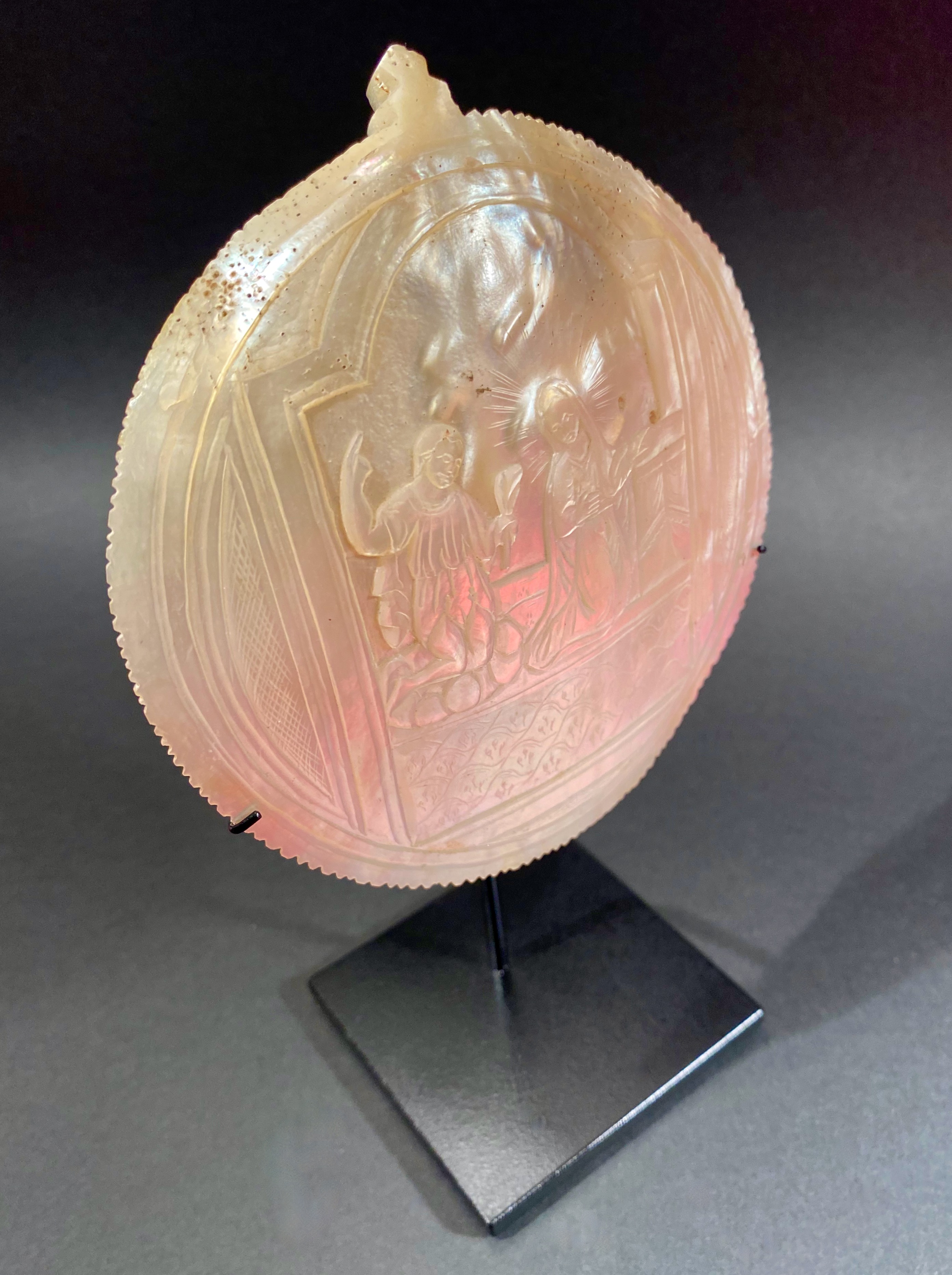

Title: 18th century Antique Hand-Carved Seashell Religious Relic Alter Shrine
Shipping: $29.00
Artist: N/A
Period: 18th Century
History: Ancient Art
Origin: Southern Europe > Spain
Condition: Very Good
Item Date: N/A
Item ID: 445
Beautifully hand-carved late 18th-century Antique Seashell mother-of-pearl Religious Relic ceremonial Shrine object, designed with a contemporary display custom stand. A lot of this kind of handicraft work was made on ships to pass the time away. Religious handicraft art using natural materials such as hand-carved seashells has a long history dating back to ancient civilizations. Many cultures have used shells in religious and spiritual practices, often incorporating them into decorative items such as masks, jewelry, and altars. In some indigenous cultures, seashells were believed to have spiritual significance and were used in ceremonies and rituals. In Christianity, shells have been used as a symbol of pilgrimage, with the scallop shell being a common emblem of the Camino de Santiago. In recent times, religious handicraft art using natural materials such as seashells has become a popular form of folk art, with many artisans creating intricate and detailed pieces.
The use of seashells in religious objects on ships has a long history, dating back to ancient seafaring cultures. In many cultures, shells were believed to have spiritual significance and were used to protect ships and sailors from harm. For example, in ancient Greece, a ceremonial offering of a seashell was made to the sea-god Poseidon before a voyage to ensure a safe journey. Similarly, in ancient Rome, shells were used to adorn the prows of ships to appease the gods of the sea. In the Middle Ages, Christian sailors would often carry scallop shells with them as a symbol of pilgrimage, particularly to the shrine of Saint James at Santiago de Compostela in Spain. The scallop shell also became a symbol of the Christian pilgrimage to Jerusalem, and it was commonly carved into ship figureheads and other religious objects on ships. In the present time, the tradition of using seashells in religious objects on ships is not widely practiced but some ships still carry religious objects made of seashells as a symbol of good luck and protection.